The Stone of Scone has played a role in the coronation of every English royal since 1308, but Celtic legend claims its story goes all the way back to Biblical times.
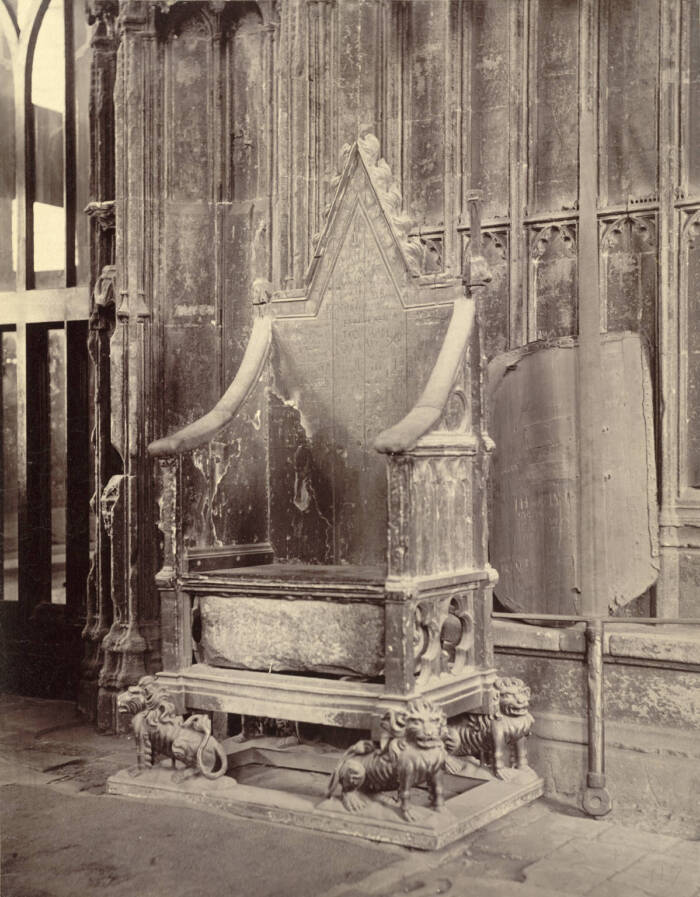
Public DomainThe Stone of Scone in Westminster Abbey circa the late 19th century.
For centuries, a 336-pound rock has played a crucial role in the coronation of English royalty. During their crowning ceremonies, kings and queens have sat upon the Stone of Scone, or the Stone of Destiny, as their royal reign officially begins. But what exactly is it?
Like many ancient objects, the story of the Stone of Scone is a mix of fact and legend. But its importance in Scottish and English history is clear. In the 14th century, the English rioted when the stone almost returned to Scotland. More than 600 years later, a group of Scottish students hauled it back north.
Today, the Stone of Scone — adorned with iron rings and a roughly carved cross — resides in Scotland. But its journey to get there has been a long, winding, and mysterious one.
The Stone Of Scone’s Ancient Origins
Legend states that the Stone of Scone dates back to Biblical times. It was purportedly used as a pillow in Bethel by Jacob, the father of the Israelites, as he dreamed of a stairway that could reach heaven.

Public DomainA depiction of Jacob dreaming. He allegedly used the Stone of Scone as a pillow.
From there, according to some lore, the stone served as a pedestal for the Ark of the Covenant. Other stories state that the rock was carried to Egypt by one of Jacob’s sons, where it was allegedly discovered by King Gathelus of Greece around the 15th century B.C.E. Gathelus carried the stone from Egypt to Spain. It stayed there for hundreds of years until the king of Spain’s son purportedly brought the stone to Ireland in 700 B.C.E. during an invasion.
There, the stone was placed on Tara Hill, a sacred hill in County Meath. Because it allegedly groaned if the person who sat upon it was royal, it was dubbed the Lia Fáil or “speaking stone.”
Though there is more than one Lia Fáil in Irish history, legend states that this speaking stone was moved from Ireland to Scotland in 498 C.E. It was purportedly relocated by Fergus Mór mac Eirc, who is considered the “first king of Scotland” and once ruled over the ancient kingdom of Dalriada, which encompassed both western Scotland and northeastern Ireland. Fergus seemingly decided to move the sacred stone when he changed the location of the royal seat.
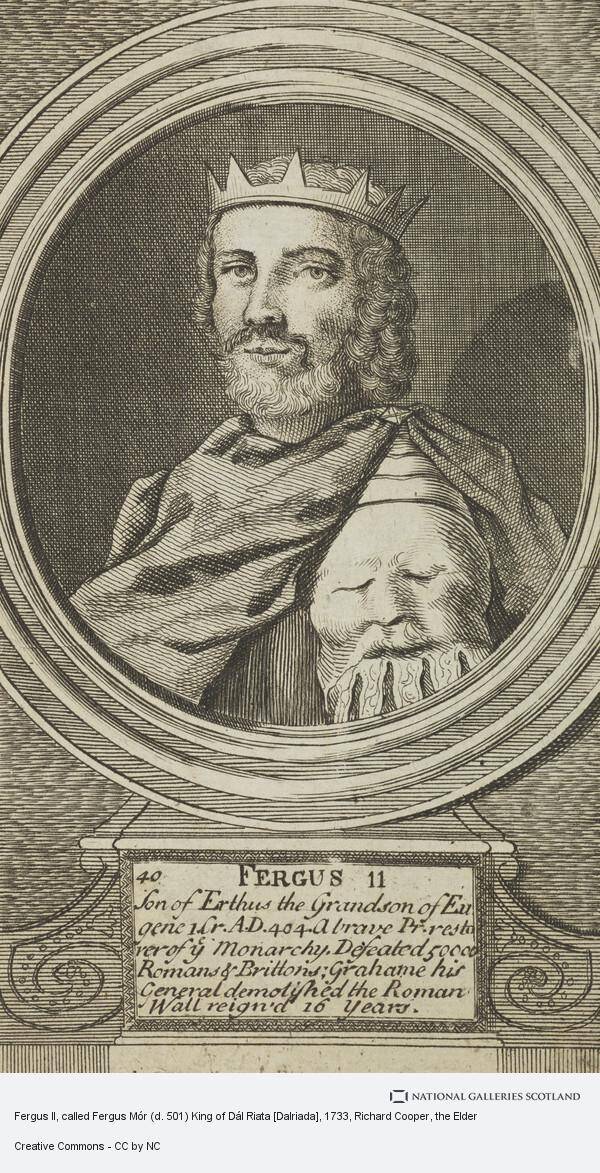
National Galleries of ScotlandFergus Mór mac Eirc, the “first king of Scotland,” purportedly moved the Stone of Scone from Ireland to Scotland, where it remained for centuries.
The speaking stone became the Stone of Scone around 840 C.E. when it was moved from Dunnadd to Scone Abbey in Perthshire. There, it played an important role in the coronation of Scottish kings for centuries.
Until the English marched in, that is.
How The Stone Of Destiny Moved To England
The Stone of Scone had been in Scotland for hundreds of years when King Edward I invaded the country in March 1296. After his victory at the Battle of Dunbar that April, he took the Stone of Scone back with him to England.
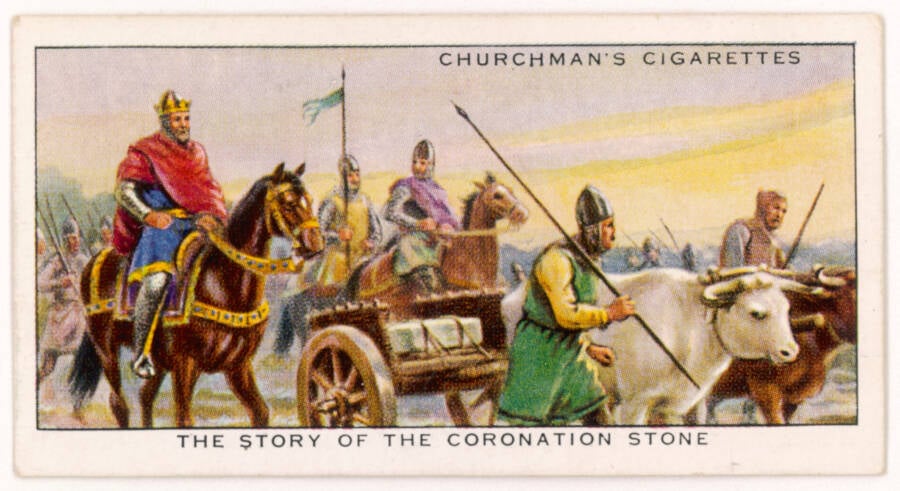
Chronicle / Alamy Stock PhotoA depiction of King Edward I taking the Stone of Scone from Scotland in the 13th century.
At least he thought he did.
Some suggest that the Scots tricked Edward. The BBC reported in 2023 that it’s possible that monks at Scone Abbey hid the real Stone of Scone in a nearby river and offered a fake to the English soldiers. Indeed, later tests have suggested that the stone taken by the English originated from Scotland — not ancient Palestine or even Ireland.
In any case, Edward I brought it back to London, where he commissioned the construction of a special chair to contain it. Carpenters built the Coronation Chair, also known as King Edward’s Chair, around 1300 or 1301 and fit the Stone of Scone into its base. Westminster Abbey explains that the chair — and thus, the stone — has been used in coronation ceremonies since 1308 and definitely in the crowning part of the ceremony since 1399.
However, legend also states that the stone was once inscribed with a prophecy that read:
Unless the fates be faulty grown
And prophet’s voice be vain
Where’er is found this sacred stone
The Scottish race shall reign.
And in 1603, the prophecy seemed to come true. Queen Elizabeth I died with no heirs, which meant that her Scottish relative King James VI of Scotland became James I of England. The “Scottish race” thus reigned.
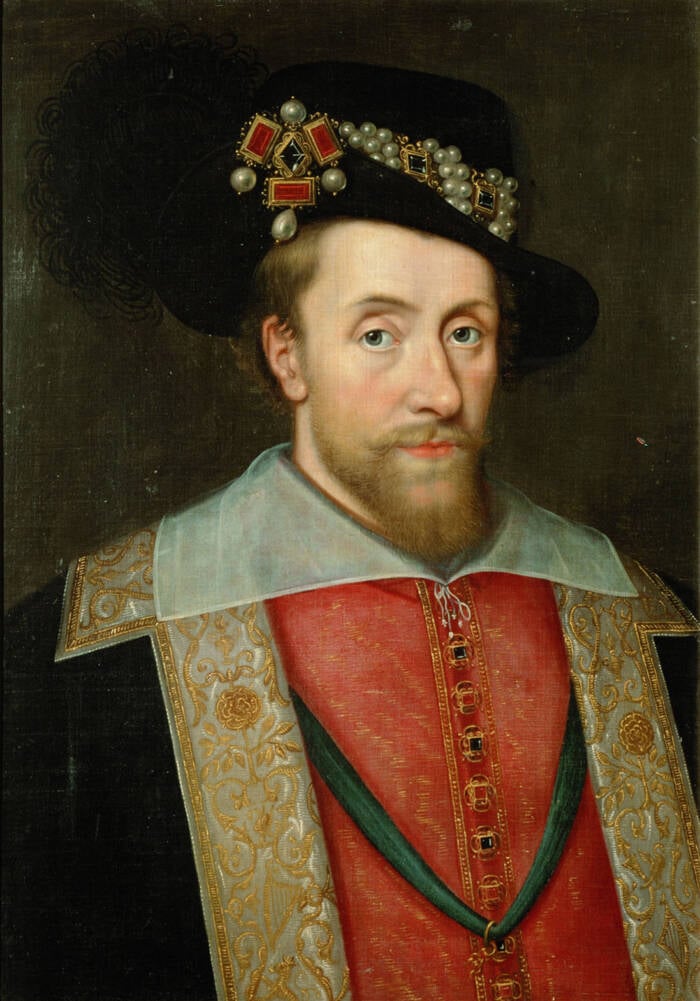
Public DomainThe Stone of Scone’s alleged prophecy was fulfilled when King James VI of Scotland became James I of England after the death of Queen Elizabeth I.
But controversy between England and Scotland over the Stone of Scone continued for centuries.
The Tug-Of-War Over The Ancient Relic
Disagreements over the Stone of Scone began soon after it was brought to England. In 1328, King Edward III of England even promised to return the stone as part of the Treaty of Northampton, but rumor has it that rioting crowds protested so fiercely that it couldn’t be removed from Westminster Abbey.
Six centuries later, the Stone of Destiny — which was also damaged during a suffragette bombing in 1914 — was stolen out of Westminster Abbey by four Scottish Nationalist students. On Dec. 24, 1950, they broke into the church, dragged the stone across the floor, and vanished into the night with the celebrated Scottish relic in the trunk of their car.
The disappearance of the stone caused such an uproar that the border was closed between England and Scotland. It was eventually found among the ruins of Arbroath Abbey — which is linked to the 1320 declaration of Scottish independence — and returned to England by April 1951.
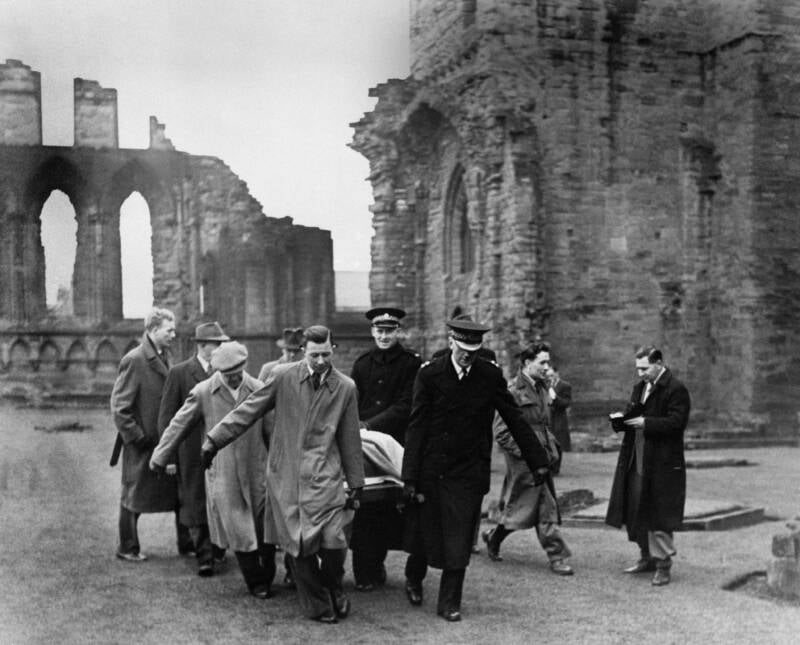
PA Images / Alamy Stock PhotoThe recovery of the Stone of Scone from Arbroath Abbey in Scotland.
“The Stone of Destiny is Scotland’s icon,” Ian Hamilton, one of the students, told the BBC in a rare interview before his death in 2022. “In one of the many invasions by the English into Scotland, they took away the symbol of our nation. To bring it back was a very symbolic gesture.”
The students were never charged with a crime — one politician declared it would not be in the “public interest to prosecute the vulgar vandals” — but debate around the Stone of Scone continued.
In 1996 — ahead of a referendum to establish a Scottish Parliament — British Prime Minister John Major announced that the Stone of Scone would be returned to Scotland. However, he had one condition: It would have to periodically be loaned back to England so it could continue its role in coronations.
Today, the Stone of Scone quietly resides in Scotland. Its exact origins remain unclear, but it’s certainly an incredible witness to history. Not only has this Scottish relic been a part of every English coronation since the 14th century, but it also has a legendary link to even more ancient times.
It may be said that the stone no longer speaks. But it does listen.
After reading about the long and winding history of the Stone of Scone, discover the surprising history of the Holy Grail — which doesn’t appear in the Bible at all. Or, learn about Ireland’s Blarney Stone and why tourists today are so eager to give it a kiss.





